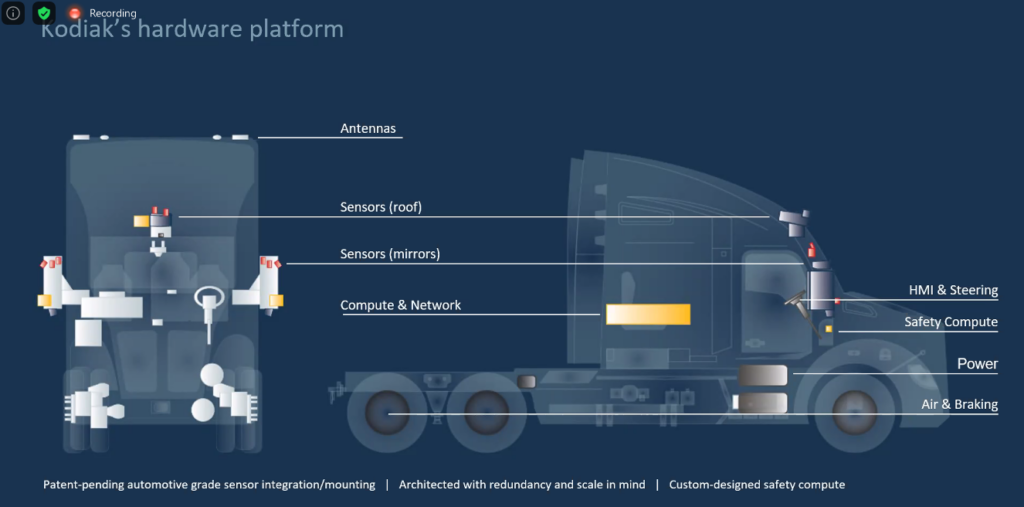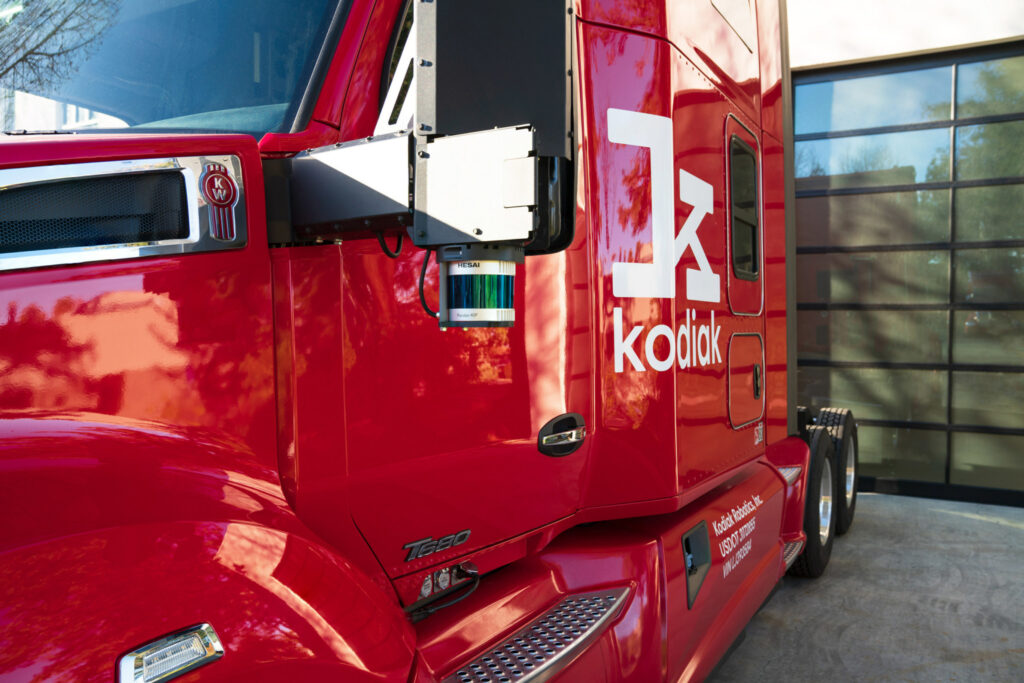CVSA considers how to enforce safety on driverless trucks
When SAE Level 4 autonomous trucks take to the road without safety drivers in the cab, how will they react to law enforcement? Will they be able to respond to sirens and pull over for law enforcement?
Will police be able to identify the trucks are driverless? Will they be able to safely navigate weigh stations? And will Commercial Vehicle Safety Alliance (CVSA) inspectors be able to safely access the cab to conduct Level 1 inspections?

Those are a few of the considerations the CVSA is taking up with manufacturers of automated driving systems (ADS). Daniel Goff, head of policy with Kodiak Robotics, addressed those issues along with Will Schaefer, director of safety programs with CVSA during a webinar July 21.
Currently, Kodiak is one of many technology startups with ambitions to develop SAE Level 4 trucks, which can by definition, “perform the entire driving task in some limited operational design domain.”
That could mean certain highway routes and adjacent roads, “by the middle of the decade with nobody inside,” Goff added. About 100 such trucks are currently being tested on-highway today, but with a safety driver behind the wheel and an engineer in the passenger seat to oversee the technology.

But Goff acknowledged these platforms are being layered on top of today’s trucks – in Kodiak’s case, the Kenworth T680 – so maintenance concerns such as tire and brake wear will remain, even when driverless. The National Highway Traffic Safety Administration (NHTSA) has estimated about 93% of crashes are caused by driver error, and Goff said automation can reduce or eliminate those crashes.
“They never drive distracted, they don’t get tired, they don’t speed or drive aggressively,” he said. “They’re the among the world’s most boring drivers – they’re the safest, most boring vehicles on the road by design.”
But without drivers in the cab, it’s yet to be determined how these vehicles will interact with law enforcement and CVSA inspectors. With driverless truck tests expected to begin in 2023, there’s limited time to figure that out.
The CVSA’s Schaefer said the alliance has been working with various groups, including manufacturers and the Technology & Maintenance Council of the American Trucking Associations to figure this out. It has come out with two recommendations so far: to work with manufacturers of the systems to create an ADS malfunction indicator light so inspectors can easily determine if the system is working; and to develop a system to show a truck has undergone an inspection while enroute.
This, similar to an “enhanced pre-trip inspection” would qualify driverless trucks to bypass roadside inspections, something the CVSA is looking to achieve.
“Limiting roadside stops may be beneficial safety-wise,” Schaefer said, but added “we are not planning to take away law enforcement authorities.”
That means if driverless trucks will cross borders, there must still be processes in place for border guards to inspect them for contraband. CVSA has formed an Enforcement and Industry Modernization Committee that is examining these challenges. The committee was first formed to address such relatively simple complexities such as new aerodynamic fairings that make access to certain components difficult during roadside inspections.
It grew to encompass the emergence of self-driving truck technologies. Schaefer said CVSA is well positioned to develop training materials and inspection requirements for companies operating such trucks, to ensure a comprehensive pre-trip inspection is conducted, in addition to an electronic remote inspection to occur while the truck is enroute.
The motor carrier operating the truck will still be responsible for any out-of-service defects that occur. There has also been talk of developing a Level 8 inspection that would cover new technologies found on autonomous trucks, including the ADS system and enhanced pre-trip inspection requirements.
Have your say
This is a moderated forum. Comments will no longer be published unless they are accompanied by a first and last name and a verifiable email address. (Today's Trucking will not publish or share the email address.) Profane language and content deemed to be libelous, racist, or threatening in nature will not be published under any circumstances.
-
Hahahaha … good one 🙂
And you can bet that with all the computers onboard that the truck is way smarter, and knows the law way better, than John E. Law that just pulled over an autonomous truck.
This is all well and good for the south, but what happens in the north when sensors get covered in ice, snow and slop in the lousy weather.
-
Do you really think they haven’t thought of that already?
Driverless trucks or any vehicle has to be the most idiotic invention ever made. This should not exist on our roads. Can these vehicles make a split second decision to avoid an accident.I doubt it.
Any way I had my say. Thank you
-
ABSOLUTELY agree!.
Use the system in the terminal yards
BUT
not on the road!
Why would we care ? We will not be in them.